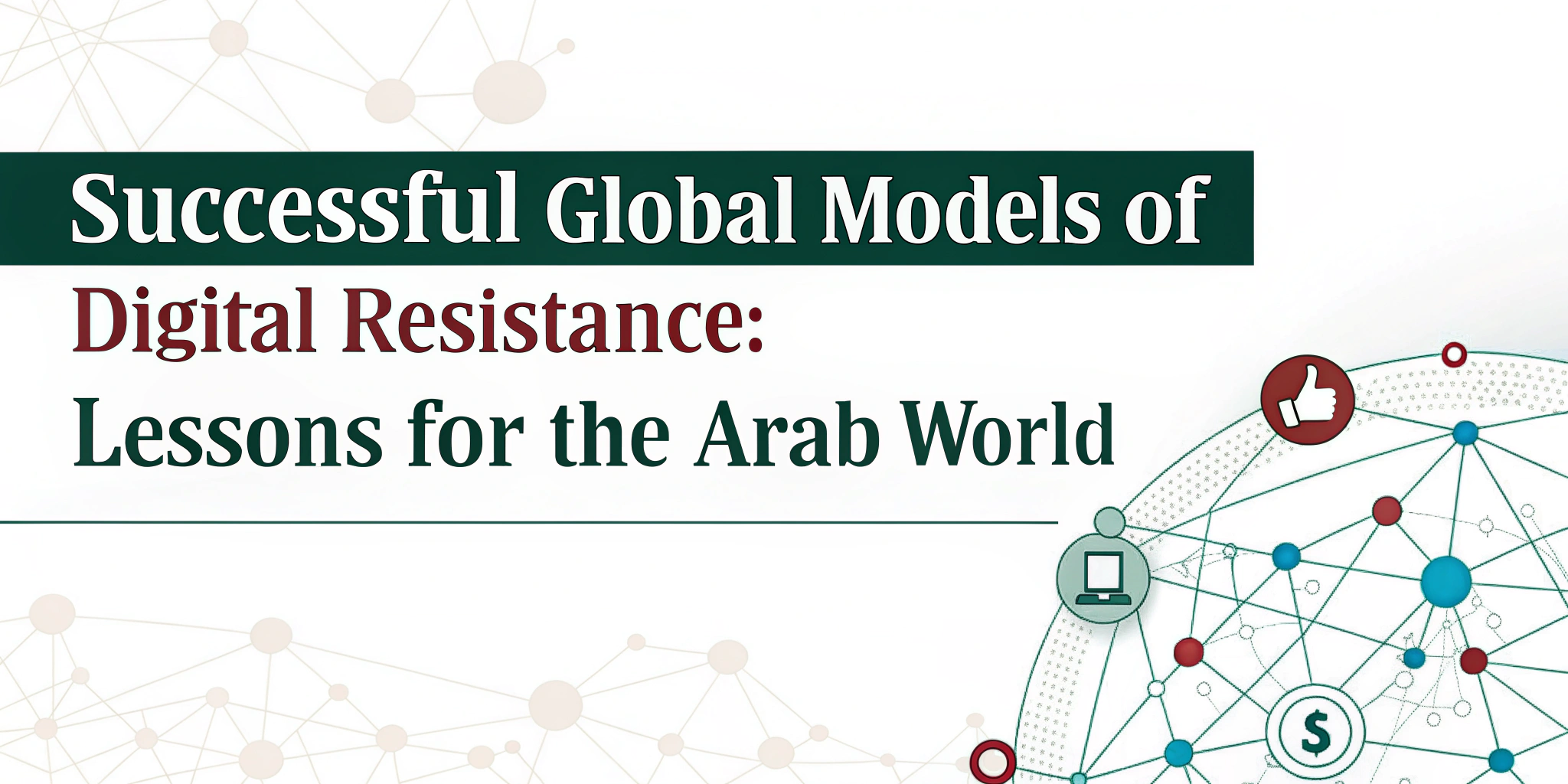
نماذج عالمية ناجحة للمقاومة الرقمية: دروس للعالم العربي
١. الصين: السيادة الرقمية الشاملة (النموذج الأكثر اكتمالاً)
أ. أبرز الإنجازات
- الجدار الناري العظيم: نظام تصفية متطور يحمي الفضاء الرقمي الصيني
- نظام بدائل متكامل:
- بايدو (بديل جوجل).
- ويتشات (بديل واتساب وفيسبوك)
- علي بابا كلاود (بديل AWS وأزور)
- تشريعات صارمة:
- تخزين البيانات محلياً منذ 2017
- مراجعة شاملة للخوارزميات
ب. الدروس المستفادة
- ضرورة وجود رؤية استراتيجية شاملة مدعومة من الدولة
- أهمية تطوير بدائل محلية متكاملة قبل فرض القيود
- استثمار ضخم في البحث والتطوير (ميزانية الصين للذكاء الاصطناعي: 15 مليار دولار سنوياً)
٢. روسيا: السيادة الرقمية تحت العقوبات (نموذج الأزمات)
أ. أبرز الإنجازات
- نظام مير للدفع: بديل SWIFT منذ 2014.
- الإنترنت السيادي: 95% من حركة الإنترنت محلية.
- منصات محلية:
- ياندكس (محرك بحث)
- VK (شبكة اجتماعية)
- RuStore (متجر تطبيقات)
ب. الدروس المستفادة
- أهمية التخطيط المسبق للأزمات (بدأت روسيا التحضير منذ 2012)
- ضرورة إعداد البدائل قبل الحاجة إليها
- فعالية التعاون بين القطاعين العام والخاص
٣. إيران: المقاومة الرقمية تحت الحصار (نموذج التحدي)
أ. أبرز الإنجازات
- شبكة المعلومات الوطنية: 75% من حركة الإنترنت محلية.
- منصات اتصال محلية:
- روبيكا (بديل تيليجرام).
- بالاه (بديل واتساب)
- أنظمة تشغيل:
- بيان (للأجهزة الحكومية)
- موبيك للهواتف
ب. الدروس المستفادة
- إمكانية بناء نظام رقمي تحت الحصار
- أهمية التعليم التقني (تخرج إيران 250 ألف مهندس سنوياً)
- ضرورة التكيف مع الظروف الصعبة
٤. الاتحاد الأوروبي: السيادة الرقمية التنظيمية (نموذج تشريعي)
أ. أبرز الإنجازات
- GDPR: المعيار العالمي في حماية البيانات.
- GAIA-X: مشروع السحابة الأوروبية.
- قوانين المنصات:
- قانون الأسواق الرقمية
- قانون الخدمات الرقمية
ب. الدروس المستفادة
- قوة التشريعات الموحدة في فرض السيادة
- أهمية التعاون بين الدول المتجانسة
- فعالية الضغط التنظيمي على الشركات العالمية
٥. الهند: السيادة الرقمية الشعبية (نموذج الكتلة الحرجة)
أ. أبرز الإنجازات
- نظام الدفع الموحد (UPI): 8 مليارات معاملة شهرياً.
- منصات محلية:
- كوو (بديل تويتر).
- ONDC (بديل أمازون)
- سياسة البيانات:
- تخزين البيانات محلياً
- فرض ضرائب على الشركات الأجنبية
ب. الدروس المستفادة
- قوة السوق الكبيرة في فرض الشروط
- أهمية الحلول البسيطة التي تتكيف مع الثقافة المحلية
- فعالية الحوافز المالية في تشجيع التوطين
٦. كوريا الجنوبية: السيادة الرقمية التكنولوجية (نموذج الابتكار)
أ. أبرز الإنجازات
- شبكة 5G محلية بالكامل
- منصات محلية مهيمنة:
- نافر (بديل جوجل).
- كاكاو (نظام اتصالات متكامل)
- تشريعات صارمة ضد المنصات الأجنبية
ب. الدروس المستفادة
- أهمية الاستثمار في البنية التحتية
- ضرورة تطوير حلول متكاملة (وليست بدائل جزئية)
- قوة الشراكة بين الشركات الكبيرة والصغيرة
الخاتمة: دروس رئيسية للعالم العربي
- البدء مبكراً كما فعلت الصين وروسيا
- الاستفادة من حجم السوق كما فعلت الهند
- التركيز على التعليم التقني كما فعلت إيران
- تشريعات موحدة كما في الاتحاد الأوروبي
- الابتكار التكنولوجي كما في كوريا
لم تعد السيادة الرقمية خياراً ترفياً، بل أصبحت ضرورة استراتيجية للبقاء في العصر الرقمي. النماذج العالمية تثبت أن:
- البدائل المحلية ممكنة
- المقاومة الرقمية ناجحة
- السيادة التكنولوجية تحقق الاستقلال الحقيقي
السؤال الآن هو: **متى ستبدأ الدول العربية في تطبيق هذه الدروس؟